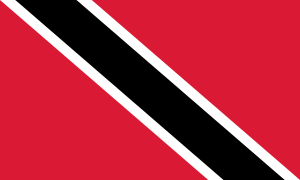Arena Massacre
 |
|---|
| Social unrest in Trinidad and Tobago |
| Spanish Trinidad (pre-1797) |
| Arena Massacre |
| British Colonization |
| Hosay Massacre - Canboulay Riots 1903 water riots - Labour riots of 1937 |
| Post-independence (from 1962) |
| Black Power Revolution Jamaat al Muslimeen coup attempt |
The Arena Massacre or Arena Uprising took place on 1 December 1699 in Trinidad. It resulted in the death of several hundred Amerindians, Roman Catholic priests connected with the mission of San Francisco de los Arenales, the Spanish Governor José de León y Echales and all but one member of his party.[1]
Amerindians tied to the Church's encomienda at the mission at Arena revolted, killing the priests and desecrating the church.[2] They then ambushed the governor and his party, who were on their way to visit the church. Among those killed in the governor's party was Fr.Juan Mazien de Sotomayor, O.P., missionary priest to the Nepuyo villages of Cuara, Tacarigua and Arouca.
Aftermath
The rebels hastily buried the bodies of the monks, threw the governor's body into the river and headed for the coast. They were pursued by the Spaniards who overtook them at Comcal and drove them to Galera Point. Many dove into the sea in preference to being captured. Eighty four rebels were captured and sixty one of them were shot. The twenty two identify as ringleaders were hanged on 14 January 1700 at San José de Oruña, the capital of the colony,[2] and their dismembered bodies displayed.
Miracles
In April 1700 a party set out to recover the bodies of the Capuchin monks. According to the official history of the Capuchins, written by Fr. Mateo de Anguiano in 1704, the ground was still wet with fresh blood, and the bodies of the monks were uncorrupted, bleeding from their wounds when they were moved. The bodies were taken to the main church where they lay in state for nine days.
In 1885 Dominican Fr. Cothonay claimed to have found the site of the Mission of San Francisco de los Arenales. In addition to physical evidence he cited Amerindian traditions that on Holy Thursday and Good Friday every year, "remarkable things happened" and some claimed to have heard voices, talking and singing, a priest saying Mass and people praying.
References
- ↑ Anthony, Michael (2001). Historical Dictionary of Trinidad and Tobago. Scarecrow Press, Inc. Lanham, Md., and London. ISBN 0-8108-3173-2.
- 1 2 Allen-Agostini, Lisa (30 November 1999). "Revising the Arena affair". Trinidad Guardian. p. 21. Archived from the original on July 19, 2001. Retrieved 28 March 2014.
Further reading
- P J Buissink; Historical Society of Trinidad and Tobago, Documents relating to the massacre of the governor, Don José de Leon y Echales, other officials and missionaries at San Francisco de la Arena, by Indians, on 1st December, 1699., Trinidad and Tobago, A.L. Rhodes, 1938.